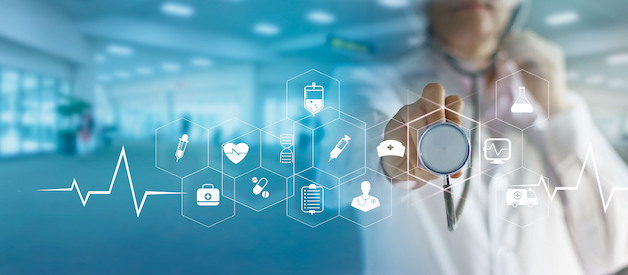
In a perfect world, all health data would be located in a central database. A patient’s records would be readily available to anyone who accessed them, painting a clear picture of their medical history from birth forward. Medical staff could easily see every interaction they had with a medical team, no matter where it occurred. Have an accident on vacation? The visit to the local ER would be there. Sought treatment in your twenties that might be relevant now? A doctor could look over those notes too.
Of course, we don’t live in that perfect world … yet. Most medical facilities are still struggling creating and viewing EHRs, with little regard for how this data will interact with other systems all over the country.
Billions are spent annually to create systems that work for scheduling, monitoring, medical tracking, as well as interacting with individual patients. Far less attention is spent on interoperability, digitizing the millions of files currently sitting in warehouses and research facilities, creating a complex database that can help any medical team quickly plugin and decipher what a perplexing ailment might be.
Most physicians today spend 34 to 55 percent of their time creating notes and reviewing medical records. That takes away time from patient interactions, and honing in on their craft.
Enter AI and machine learning.
Manually entering data is inefficient at best. Future EHRs are being developed to integrate data directly into EHRs, to measure and send results right into the database. This eliminates a crucial middle step of data transfer between patient and doctor, and allows real-time results to be available for a more complex evaluation.
The more data available within the system itself, the more AI can dive in and pinpoint variants, calling out discrepancies medical staff wouldn’t catch. The crucial step is getting the data into the system. But when up to half of a physician’s day is spent evaluating and manually inputting and reviewing medical records, it’s subjective at best. How do you move past that?
Evaluate and improve workflow
It’s easy to fall into a pattern, accept older technology because “we’ve always done it that way.” Now isn’t the time to stay safe and do things the way they’ve always been done.
Instead, have a team always evaluating regulatory changes and technology innovation. What can you bring into your practice that will create a more efficient environment? Constant evaluation may find questions within EHR, for example, that are frustrating for both the patient and physician, and provide relatively little benefit to the overall impact of treatment. Eliminating or changing the process can increase customer satisfaction, and decrease the amount of time spent evaluating content within the EHR.
Using new innovation
Tech advancements are coming on board every day to make life easier. Voice recognition, connected devices, even digital dictation is more effective than ever. This can reduce time spent sitting down and typing out data, when a simple two-minute dictation with an app can create a clearer, more refined entry into the EHR.
Today’s EHR databases are still mostly created with desktop applications in mind. Yet two-thirds of internet access is now performed from mobile devices. Why not create a system that integrates easily with mobile technology?
Don’t know where to find all the pieces to the puzzle? Why not rely on an outside team that can help you find the right solutions. The future belongs to those that use technology efficiently and lead the way in creating a more user-friendly experience. Will that be you?
For IT Strategy, Cloud Conversion, or Help Desk Services reach out to us at Silver Linings Technology 360-450-4759.


